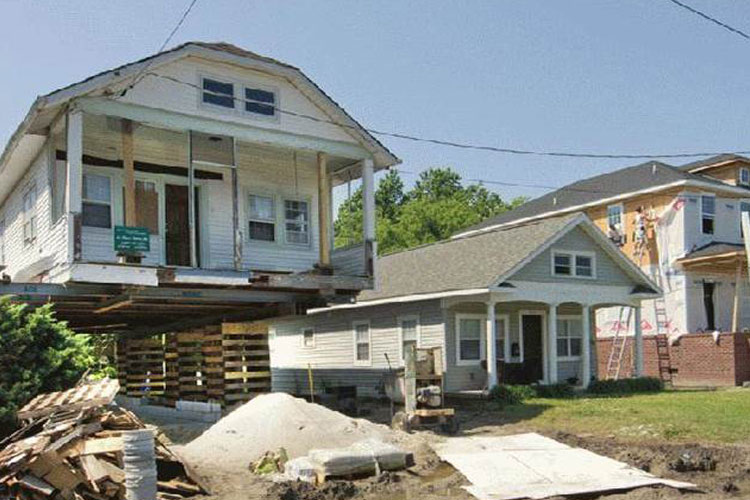Big Ideas and Priority Strategies
Our Great Region 2040 offers a road map to make sure we are a great region in 2040. Priority Strategies are based on the 6 Big Ideas listed below. Choose one of the Big Idea tabs to learn more.
Strengthening Our Economic Competitiveness
To be a great region in 2040, we should strengthen our economic competitiveness through an educated and skilled workforce.
Our Region has one of the most robust economies in the nation with major economic assets including the energy, agriculture and medical industries; international ports; and new plant expansions. However, our workforce is aging and our schools are not producing enough skilled workers to keep pace with the growing economy. Continuing Our Region's economic success depends on keeping and attracting businesses, creating diverse job choices, and providing access to technology to all areas of Our Region. Continued success also depends on having a competitive workforce. Early career and technical education, expanded apprenticeships, job training centers, and community college programs will strengthen the employment base and ensure the competitiveness of Our Region.
For more information about Economic Development, download Our Great Region 2040 or the Strategy Playbook for a complete list of strategies.
Learn more about the Priority Strategies using the tabs below.
Improve the opportunities for lifelong learning by scaling up and coordinating efforts, from quality early childhood education to GED and community education programs to skills training for seniors
Learning should be a continuous process, with Our Region's residents having educational opportunities that allow them to learn and grow throughout their lifetime. Providing education and training opportunities to people of all ages and abilities will improve the competitiveness and employability of Our Region's workforce, while enhancing overall quality of life. Programs offered can be tailored to meet the needs of people at different stages of life.
The more Our Region's residents learn through diverse educational offerings, the better their mental, physical, and financial health will be.
More information about this strategy is available in the Strategy Playbook.

Expand programs to improve job and financial skills and promote self sufficiency
Technical expertise is not the only asset needed to secure a job in today's economy. To remain competitive, employees must have desirable soft skills, personal attributes and habits that shape interpersonal interactions and work performance; good etiquette, appropriate hygiene and dress, and timeliness are soft skills that all employers demand. At home, financial education helps families manage their resources effectively, ensuring economic stability and a higher quality of life.
Expanding soft skills training, financial literacy programs, and similar initiatives will increase the competitiveness of Our Region's workforce, while improving overall quality of life. Local schools, colleges, universities, and non-profit organizations can work together to ensure these programs are available to children and adults throughout Our Region.
More information about this strategy is available in the Strategy Playbook.
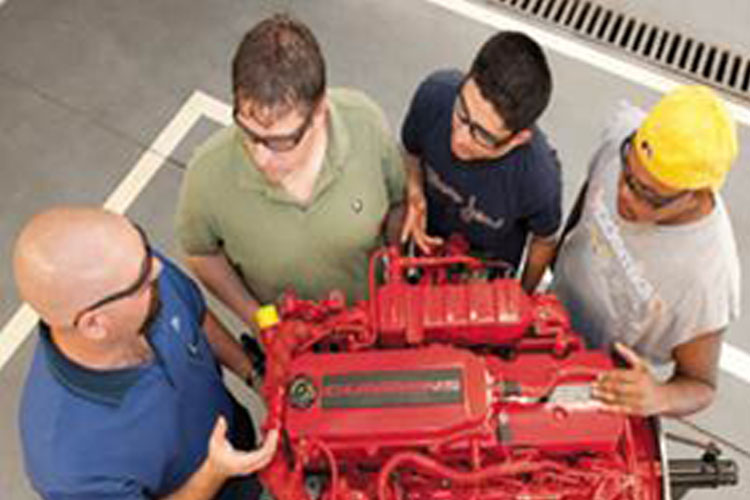
Increase availability of information on job skills needed by employers to educational institutions, allowing them to better tailor their course and training offerings
Our Region's industries are creating positions that demand new skill sets, and the educational sector needs to respond in kind with graduates able to meet the requirements of employers. Equilibrium between employers' needs and available skilled labor is important for Our Region's economic health.
In the coming years, jobs requiring at least an associate's degree are projected to grow twice as fast as those requiring no college experience. Workforce Solutions, the regional workforce board, is able to project which jobs are expected to have the most growth over the next ten years. Coordinating training opportunities in these fields with educational institutions in Our Region will help provide the labor force needed for economic competitiveness.
More information about this strategy is available in the Strategy Playbook.
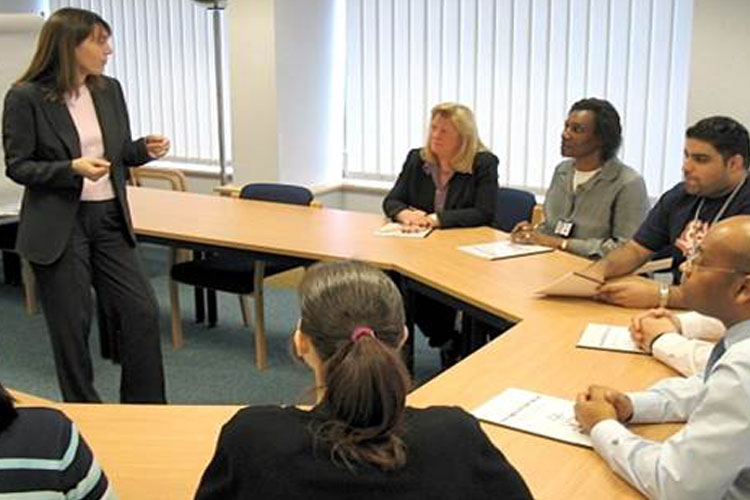
Promote business attraction and retention efforts through multi-jurisdictional coordination and financial incentives
All too often, communities focus economic development efforts almost entirely on recruiting new industries, providing little support to existing businesses. Retaining and expanding existing businesses is typically less costly and time intensive than recruiting new companies. These businesses have deep roots in the community, having already established a customer base and hired employees from the surrounding area.
Communities can take a proactive role in supporting existing businesses by working with owners to identify issues that negatively impact their operations and providing assistance to those interested in expanding or at risk of closing or relocating. Market analyses and business surveys can be used to help communities determine what type of support and resources would be most helpful to existing businesses, whether it be financial or technical assistance. Businesses content with their communities are a great asset, serving as ambassadors to existing and new entrepreneurs and supporting a variety of community-based efforts.
More information about this strategy is available in the Strategy Playbook.
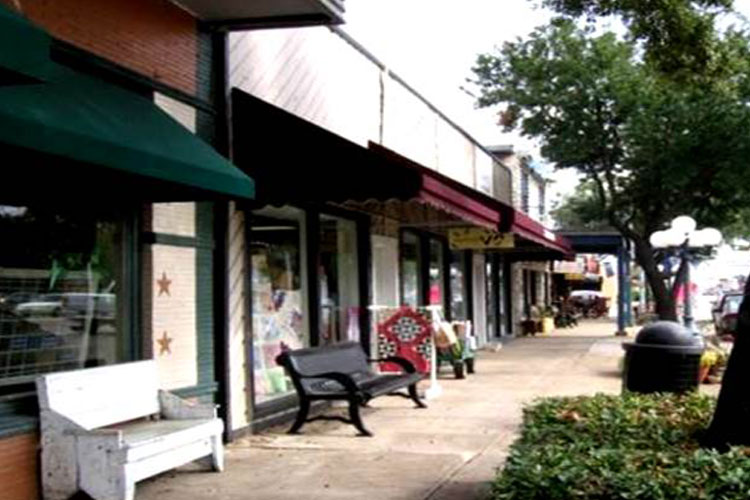
Increase availability of high speed data connections and broadband Internet across the region, especially in rural areas
In today's economy, access to high-speed data connections is a necessity for most businesses. Communities lacking adequate broadband service are unable to take advantage of many economic development opportunities, including e-commerce, telecommuting, and distance learning.
Broadband access is limited not only in rural areas with inadequate infrastructure, but also in urbanized areas where service may be available, but subscriptions are prohibitively expensive. Improving broadband availability will not only benefit businesses, but provide residents with greater opportunities, improving quality of life.
More information about this strategy is available in the Strategy Playbook.

Institute a "buy local, make local, grow local" campaign to support local businesses
Our Region has thousands of locally-owned farms and businesses, which provide surrounding communities with high-quality products and services. When goods are purchased from an independent, locally-owned business, rather than a national corporation, more of the money continues circulating in Our Region's economy. Revenue generated from locally-owned businesses is used to make purchases from other local businesses, service providers, and farms, strengthening the economic base of our communities. Locally-owned businesses help make our communities unique, with one-of-a-kind shops and restaurants attracting residents and visitors alike. Since many locally-owned businesses operate within existing communities, they support community revitalization efforts.
Local businesses are less likely to relocate, and are more invested in the community's future. Supporting these businesses through local and regional marketing campaigns will help create vibrant rural, suburban, and urban communities throughout Our Region.
More information about this strategy is available in the Strategy Playbook.
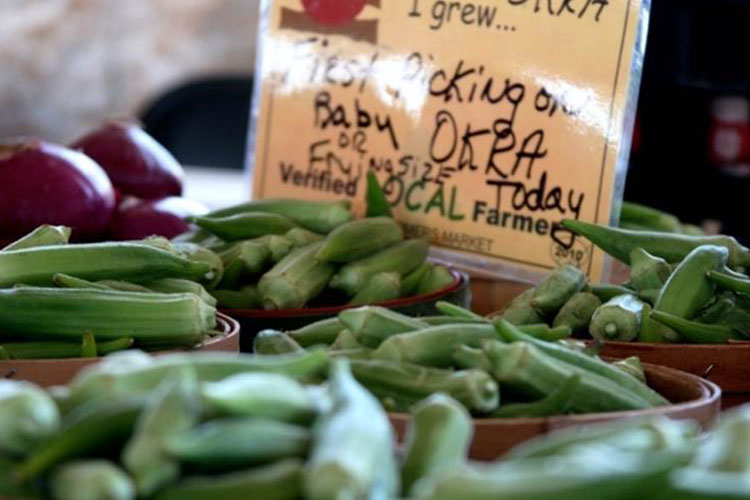
Securing Our Water's Future
To be a great region in 2040, we should secure a clean and ample water supply.
As Our Region grows in population, our water demand will also increase for irrigation, agriculture, business and industry, recreation, and drinking. But our water supply is finite and is reduced in times of drought. The quality of our water is also a concern. Most waterways in Our Region do not meet state water quality standards for recreation. Ensuring that our water is clean, not only for drinking, but also to maintain healthy fisheries and recreational opportunities, is an important part of securing our water future. Developing new supplies, increasing water conservation and reuse, and protecting water quality will be crucial to ensuring we have adequate resources in the future.
For more information about Environment, download Our Great Region 2040 or the Strategy Playbook for a complete list of strategies.
For more information about Economic Development, download Our Great Region 2040 or the Strategy Playbook for a complete list of strategies.
Learn more about the Priority Strategies using the tabs below.
Work together on long term structural solutions to increase water storage and distribution capacity
Surface water supply is being affected by ongoing drought conditions, increased demand from ongoing growth in population and industry, sedimentation in some reservoirs, and mandated reductions in groundwater use in many areas. Adequate water resources are necessary to sustain Our Region's economic vitality, the health of local ecosystems, and the vibrancy of our neighborhoods.
As growth continues, Our Region will have to determine how to provide water to new and existing residents, businesses, and industries. By 2040, the Texas Water Development Board: Region H Water Planning Group estimates demand for water will exceed supply by approximately 18 percent. Communities must work together to develop new water sources and maintain existing facilities.
More information about this strategy is available in the Strategy Playbook.
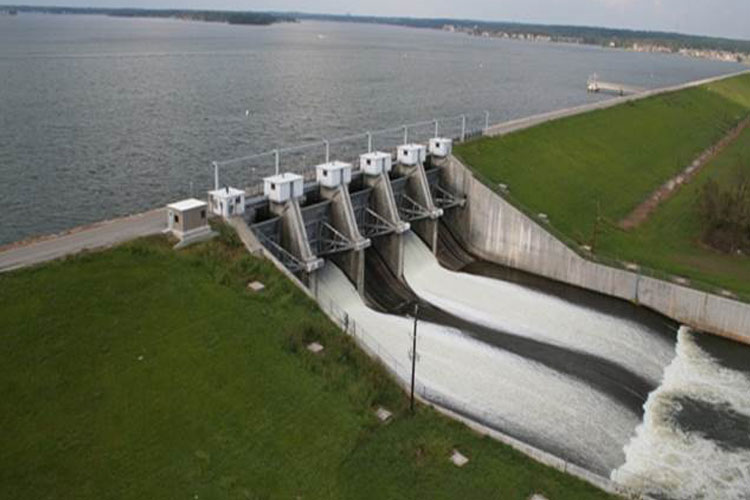
Create watershed protection plans to protect recharge zones and water sources, as well as waterways and wetland buffer areas
Ensuring safe drinking water supplies requires keeping drinking water sources (wells and surface waters) as clean as possible. Communities nationwide have realized that protecting drinking water supplies is more cost-effective and protective of public health than building or expanding treatment facilities. New contaminants continue to emerge, which can require costly treatment of source waters, if these resources are not adequately protected.
A watershed protection plan identifies potential sources of contamination to water supplies, and describes protective management strategies that, if properly implemented, can reduce the risk of contamination. Recommended strategies may include increased monitoring or inspections at potential sources of contamination, public education programs, and/or implementation of best management practices (BMPs).
More information about this strategy is available in the Strategy Playbook.
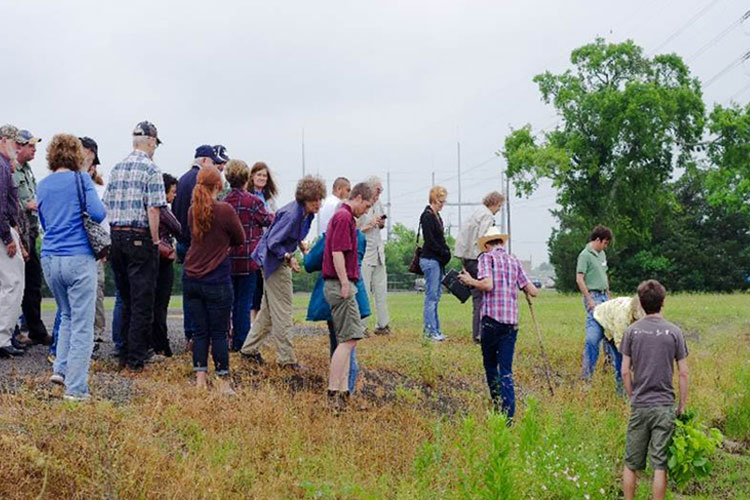
Conserve natural assets through multi-benefit green infrastructure projects and designing with nature, such as Low Impact Development and expanding Our Region's network of open space and trails along waterways
Natural lands and working landscapes are part of the region's green infrastructure network, a valuable system that helps clean water, reduce flooding and improve air quality, all while providing unique recreational opportunities. Public and private entities can work together to preserve these high-quality environmental resources to ensure these areas are protected in perpetuity.
Communities can encourage the use of environmentally-friendly design techniques, allowing Our Region to accommodate new growth, while protecting the health of natural habitats.
More information about this strategy is available in the Strategy Playbook.
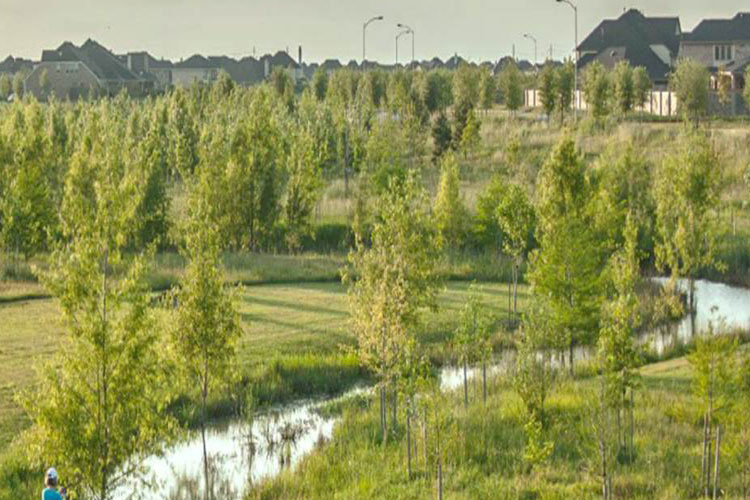
Increase awareness of the economic benefits of environmental systems
Our Region's forests, wetlands, prairies, water bodies, and other natural ecosystems provide us with a variety of services, which can be quantified in dollars and cents. These ecologically-rich landscapes clean the air, filter and cool water, store and recycle nutrients, conserve and enhance soils, pollinate crops, regulate climate, sequester carbon, protect areas against storm and flood damage, and maintain water supplies. They also provide marketable goods and services, like forest products, fish, and recreational opportunities.
Many citizens do not realize that Our Region's unique ecosystems provide valuable services that enhance our quality of life. Educational programs, science-based analyses, and other initiatives can increase awareness of these benefits, highlighting the important role natural processes play in our everyday lives. Recognizing these benefits will help policymakers and citizens calculate the full costs of their decisions.
More information about this strategy is available in the Strategy Playbook.
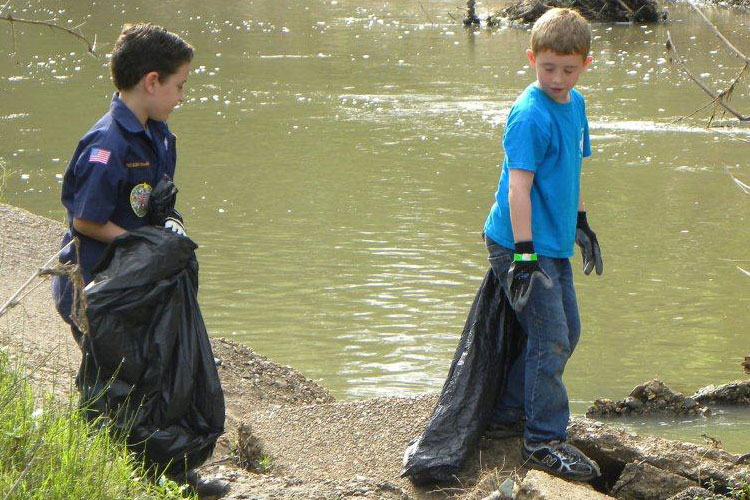
Establish alliances to coordinate water conservation and protection efforts across Our Region, including sharing data and best practices, developing financial incentives, and implementing public awareness programs
Over the coming decades, communities throughout Our Region will have to determine how to provide water to new and existing residents, businesses, and industries. Providing water to a fast-growing population is expensive and increasingly difficult. Since our rivers, streams, and aquifers are part of an interconnected system, decisions made by water providers will likely have regional impacts.
A Regional Water Task Force will promote collaboration and efficiency, resulting in potential cost savings for water providers, users, and taxpayers. This cooperative effort will coordinate policies amongst Our Region?s many water providers, streamlining regulatory processes.
More information about this strategy is available in the Strategy Playbook.
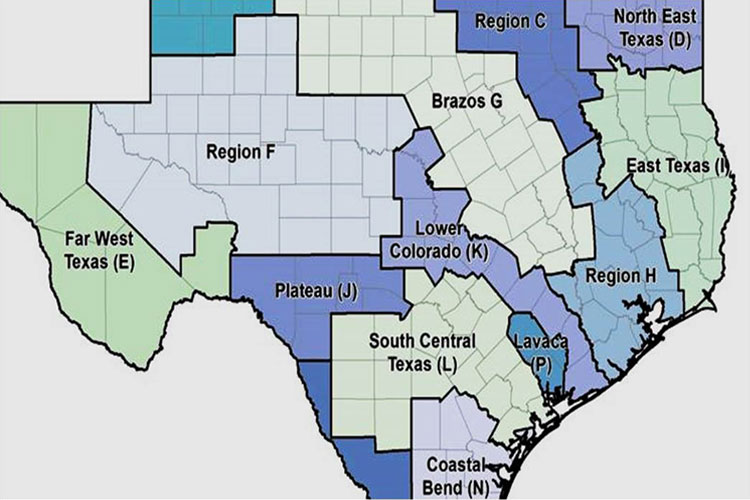
Develop a regional plan to conserve high quality natural areas
The Houston-Galveston area contains several diverse ecosystems, ranging from coastal marshes and prairies to cypress swamps and upland forests. These ecosystems contribute to Our Region's unique sense-of-place and provide multiple economic and environmental benefits.
A regional conservation plan could describe strategies for protecting and managing high-quality wetlands, forests, and prairies throughout the region, promoting inter-organizational coordination and collaboration.
More information about this strategy is available in the Strategy Playbook.
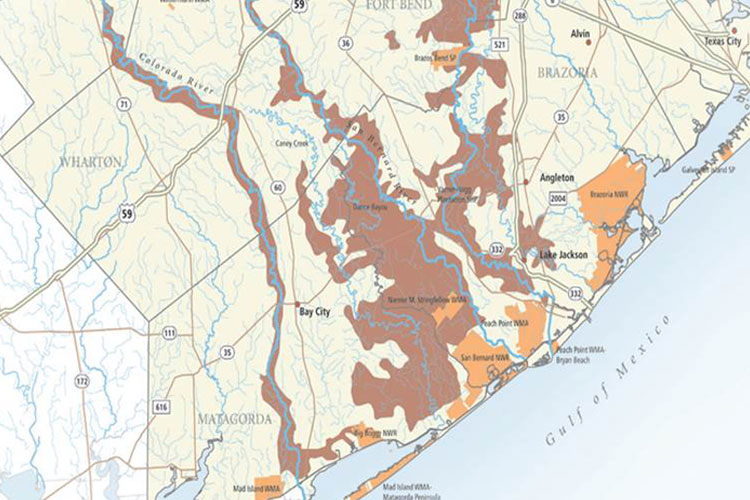
Promote efficient resource management, including energy, solid waste, and water
Taking steps to reduce the impact of Our Region's growth on natural resources will become increasingly important as people and businesses continue to move here. Promoting efficient resource management will help ensure that Our Region has enough resources to support a growing population and economic base, while maintaining environmental health and quality of life.
Utilizing conservation practices and promoting recycling efforts will minimize waste and demand for new energy sources, drinking water supplies, and waste disposal facilities.
More information about this strategy is available in the Strategy Playbook.
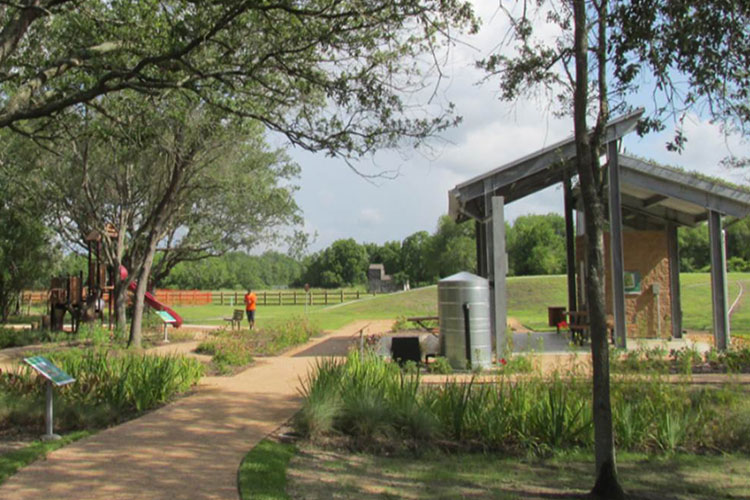
Cultivating Healthy Places
To be a great region in 2040, we should cultivate places where people can lead active, healthy lives.
Our Region's overall wellness could be improved and healthcare expenditures could be reduced by cultivating healthy communities - places where people have better access to parks, bikeways, and safe routes to school. Unfortunately, almost half of the people in Our Region live more than 10 minutes from a park or natural area. Active mobility and outdoor recreation can reduce obesity and the associated health care costs, as can strategies to provide access to healthy food in communities where it is lacking. Many of the strategies for cultivating healthier places can be achieved through better planning and community design, as well as investing in facilities.
For more information about Economic Development, download Our Great Region 2040 or the Strategy Playbook for a complete list of strategies.
Learn more about the Priority Strategies using the tabs below.
Establish regional infrastructure and distribution mechanisms to support farmers markets, local agriculture, and other means to provide fresh, healthy food to residents across Our Region
Access to healthy foods helps people maintain a well-balanced diet and reduces the risk of diet- and obesity-related illnesses. Many residents in Our Region have limited opportunities to purchase fresh, nutritious food, especially those living in rural areas and low-income neighborhoods. Our Region has already begun exploring ways to improve access to fresh foods, but more can be done. Farmers' markets, high-quality grocery stores, and community gardens can provide nearby residents with easy access to healthy food. Regional food hubs, processing facilities, and storage facilities allow farmers to process and distribute their products locally.
Farm-to-school, farm-to-hospital, and other partnerships between local farmers and Our Region's institutions can promote healthy eating habits. Developing these infrastructure and distribution mechanisms will create a self-sustaining regional food network capable of providing fresh, healthy food for all.
More information about this strategy is available in the Strategy Playbook.
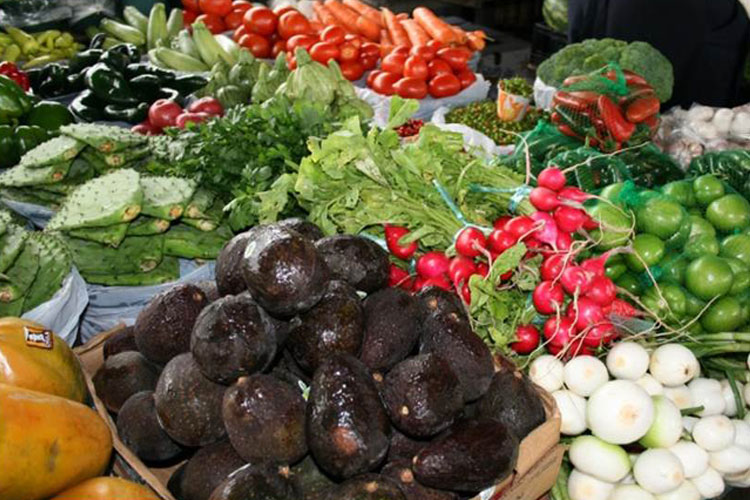
Increase current funding and identify innovative funding sources to develop and maintain sidewalks, bikeways, bikeshare infrastructure, and parks/open space that promote more active lifestyles
Building parks, multi-use trails, sidewalks, and other amenities supportive of an active lifestyle can be costly. With many other needs competing for limited funding, it can be difficult for communities to finance these projects. Federal, state, and local agencies can work together to increase current funding, while identifying and/or creating new, innovative funding sources.
By combining public and private funding, communities can complete projects that not only encourage physical activity, but can accommodate alternative modes of transportation, spur investment in existing neighborhoods, protect environmental resources, and improve overall quality of life.
More information about this strategy is available in the Strategy Playbook.

Create a regional task force that works across multiple disciplines (health departments, public safety) to address mental health issues
Mental health is a growing concern in Our Region, with communities struggling to provide the services necessary to meet demand. With insufficient funding and facilities, many communities are unable to provide adequate access to mental health services. A regional task force can help Our Region develop strategies for improving mental health, directing resources to policies and programs that will be the most impactful.
Public safety agencies, healthcare providers, school districts, health departments and other groups could be represented; these organizations understand the mental health issues Our Region is facing, and have the expertise necessary to identify innovative programs that can help those in need. By participating in a regional task force, this diverse group of stakeholders can create a coordinated, multi-faceted approach to improving Our Region's overall mental health.
More information about this strategy is available in the Strategy Playbook.
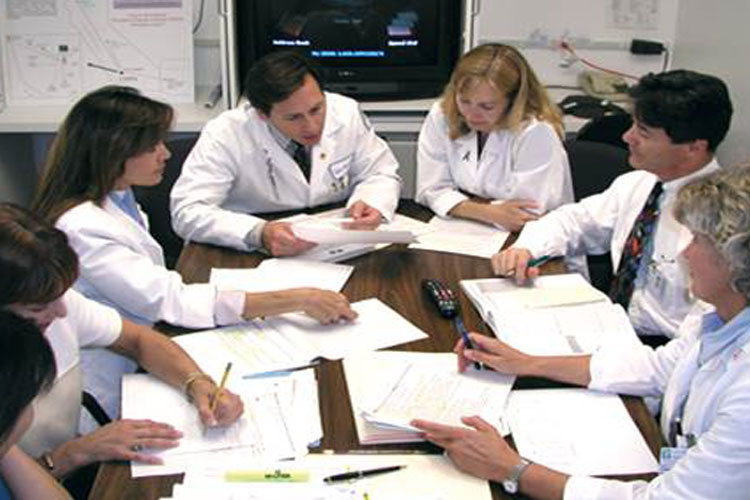
Foster neighborhoods that put an emphasis on health, incorporating elements that promote active living, social interaction, and healthy eating, and allow for aging in place
Life-long communities support people of all ages and abilities, providing residents with regular opportunities to engage in physical activity, connect with other people, and access affordable, healthy foods. These are places where people have easy access to parks, sidewalks, bikeways, and other recreational facilities. Nearby farmers' markets, grocery stores, and community gardens offer affordable, nutritious foods, while plazas and other public spaces provide opportunities for social interaction.
Localities can adopt policies that support the creation of life-long communities, encouraging developers to create projects that help realize this vision. By creating neighborhoods that promote physical and mental health, communities will improve quality of life for all.
More information about this strategy is available in the Strategy Playbook.

Identify and promote existing and emerging community resources for mental health services
One in every five Houstonians has a mental illness, which impacts their mood, thinking, and behavior. Mental illnesses are often treatable, provided those affected have access to the resources needed to improve their condition. Many people seeking mental health services for themselves or loved ones are unsure where these services can be accessed, delaying treatment.
Existing and emerging community resources can be identified and promoted, increasing the public's awareness of available services.
More information about this strategy is available in the Strategy Playbook.

Expand availability of community health services and trauma care, particularly in low-income and rural areas
Although Our Region has a world-class medical center, high-quality healthcare remains inaccessible to some. Many rural and low-income communities do not have adequate healthcare services or trauma care nearby, and some residents lack the resources necessary to reach those services in neighboring communities.
Underserved communities can work cooperatively with healthcare providers to improve access to medical facilities, using a variety of tools (cooperative agreements, innovative funding sources, etc.) to incentivize their development. Improving healthcare in underserved areas will boost our economy and improve quality of life, while saving households, businesses, and government agencies money.
More information about this strategy is available in the Strategy Playbook.

Providing Balanced Housing Choices
To be a great region in 2040, we should provide balanced housing choices near jobs, services, and transportation options.
Our Region's residents live in dense urban centers, rural towns and suburban communities, near forestlands, on open farm or ranchland, and along the coast. We have a thriving housing market and some of the most affordable housing in the country. However, homeownership is below the national average and housing options for some in Our Region are unsafe, unhealthy, or have poor access to transportation, employment, and services. We need coordinated strategies to improve code enforcement and encourage rehabilitation of older housing, along with policies that encourage development of new housing in underdeveloped areas where there is existing infrastructure, jobs, schools, and services, or where costs and complications are high, such as in urban areas.
For more information about Economic Development, download Our Great Region 2040 or the Strategy Playbook for a complete list of strategies.
Learn more about the Priority Strategies using the tabs below.
Develop local housing plans to accommodate future growth
Ensuring a sufficient range of housing options is part of maintaining a vibrant community. As Our Region continues to grow, planning for the provision of shelter of future residents needs to be considered. Developing a housing plan allows municipalities to examine their current and future housing needs.
A housing plan identifies existing housing conditions and needs, and establishes the goals, objectives, and policies that are the foundation of housing and growth strategy. Additionally, the housing plan should design programs to implement and create sustainable, mixed-income neighborhoods
More information about this strategy is available in the Strategy Playbook.
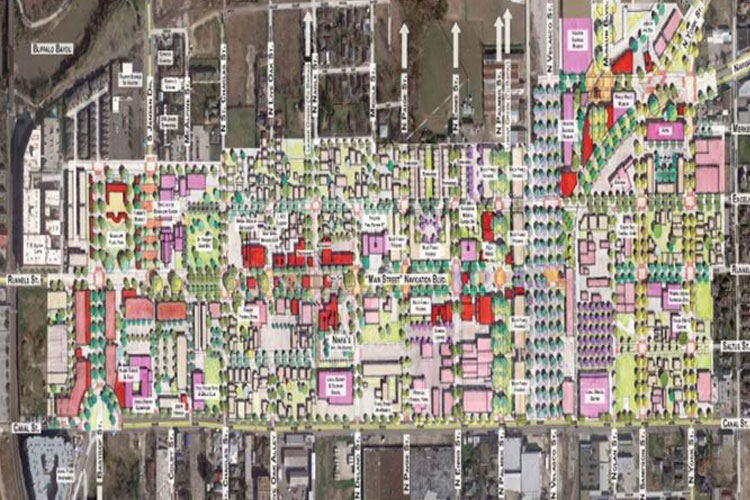
Provide financial incentives, such as tax foreclosure property programs or property lien dismissals, for developers to build diverse housing types near jobs, transit centers, and services, including mixed-use developments and housing at a variety of price points
State and federal housing dollars are limited and competition for resources is fierce. Many municipalities have developed local funding mechanisms for affordable housing. Local resources can make it possible to tailor assistance to locally-identified priorities, and make it easier to leverage state and federal funds (applicants who can provide a local match usually have a competitive advantage), resulting in a larger investment per local dollar spent.
Local assistance can take a variety of forms, including providing direct funding or indirect assistance in the form of tax relief and/or fee reductions and waivers. Private donations and fundraising can also provide critical assistance to local projects.
More information about this strategy is available in the Strategy Playbook.
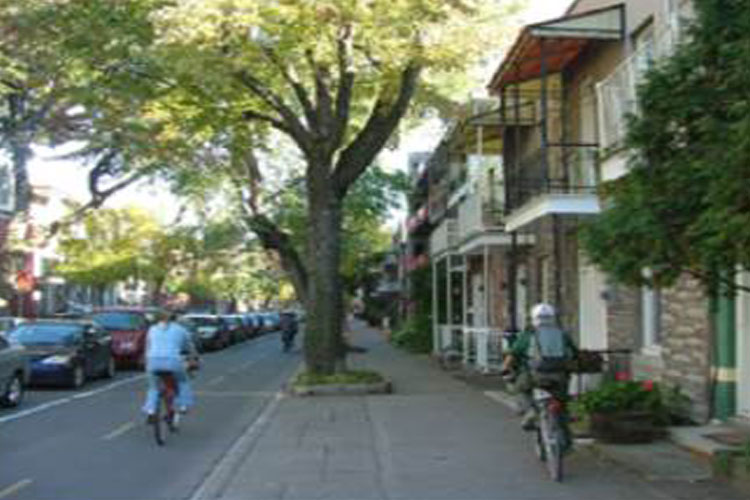
Develop incentives and a toolkit for matching and maintaining local housing stock to meet economic development needs, bringing greater access to opportunities
Jobs-housing balance means that there are a roughly equal number of jobs and housing units.
Better-planned mixed-use communities with balanced jobs and housing can help reduce travel distances and thus limit the growth in trip lengths.
More information about this strategy is available in the Strategy Playbook.
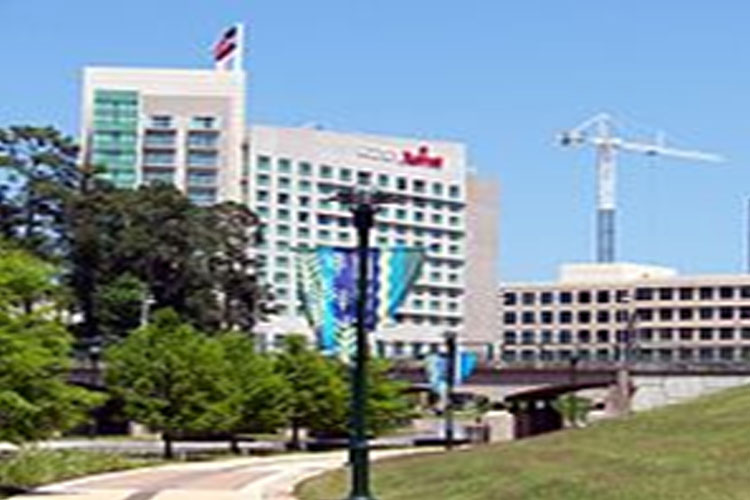
Identify gaps and opportunities in the quality and supply of the regional housing stock, including housing for seniors or aging in place
A regional Housing Gap Analysis assesses current and future housing demand, supply, cost and affordability in order to identify potential gaps in the supply of quality housing for individuals and households of a variety of incomes. The issue of sufficient housing affects many communities in Our Region.
It is more than an issue of providing shelter; it is an economic development concern. Housing is one of the greatest challenges facing many communities today. The housing market is tight and the housing stock is aging. A Housing Gap Analysis can investigate population trends, labor trends, housing supply, housing demand and the relation between these elements.
More information about this strategy is available in the Strategy Playbook.

Develop and enforce local housing codes and standards to ensure owner-occupied and rental housing is safe and healthy
Effective enforcement of building and housing codes is a key ingredient in many neighborhood revitalization efforts. Local housing, property maintenance, and building codes contain a wide array of legal requirements pertaining to housing construction and maintenance. Housing and building codes, for example, typically contain provisions governing moisture, pests, and ventilation. Many jurisdictions rely on model codes to provide the framework for local fire, building, housing, property maintenance, plumbing, electrical, energy, and mechanical codes.
Currently, these model codes are developed by the International Code Council (ICC), which has moved away from a regional approach to code development, toward the development of national model codes. Enforcement of local housing codes is critical to ensure the health and safety of the residents.
More information about this strategy is available in the Strategy Playbook.
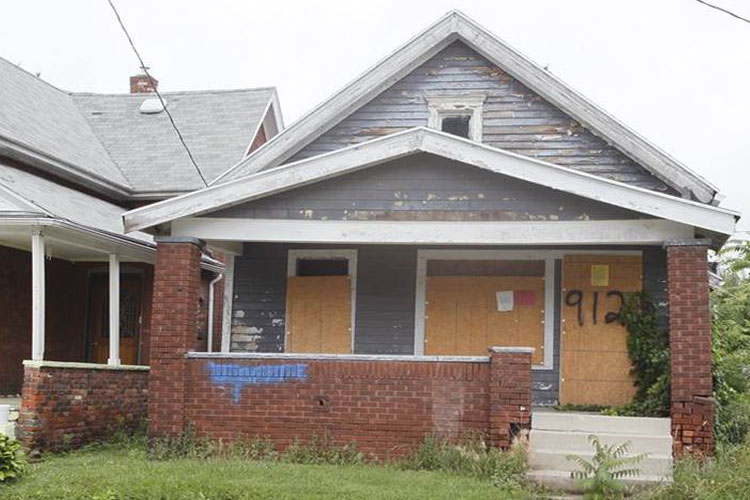
Achieving a World-Class Transportation Network
To be a great region in 2040, we should achieve a world-class transportation network.
To achieve a world-class transportation network, at a cost we can afford, Our Region needs to set clear priorities in our planning and investment. We need to reduce the time spent in traffic. This will require investment in both roadway capacity and alternative modes such as transit, walking, and bicycling infrastructure. We must also focus on getting more out of our existing system. The coverage and efficiency of our transit system needs to be broadened to better serve existing customers and attract new ones. The number of shorter vehicle trips can also be reduced by building more bikeways and safer sidewalks, especially around activity centers.
For more information about Economic Development, download Our Great Region 2040 or the Strategy Playbook for a complete list of strategies.
Learn more about the Priority Strategies using the tabs below.
Improve the efficiency of freight movement by investing in projects that improve connections between ships, trains, and trucks
Efficient goods movement is crucial to supporting Our Region's economy. However, goods movement can come at a cost to the environment. Poor freight mobility amplifies the negative impacts associated with commercial truck shipping.
To ensure the long-term prosperity of Our Region, connections between different modes of transport (ships, trains, trucks, etc.) need to be made, allowing goods to flow in and out of the region efficiently.
More information about this strategy is available in the Strategy Playbook.
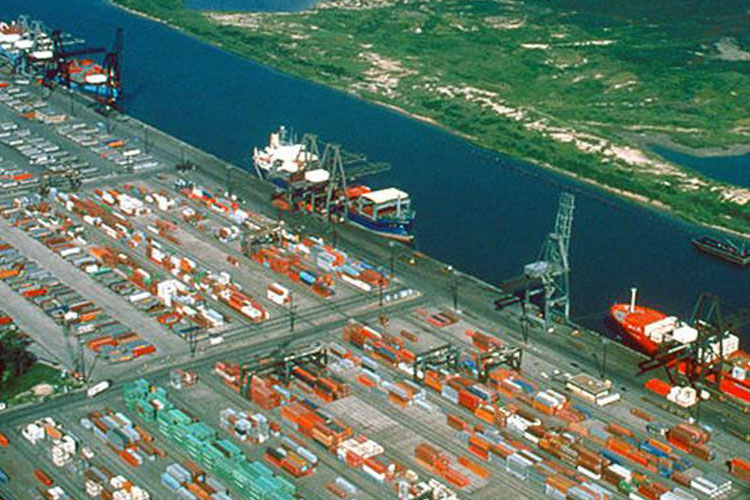
Optimize existing transportation network through a 'Fix it First' strategy and by using technology and improved incident management to maximize system capacity
Nationwide, about two-thirds of state transportation funds are spent on the construction of new roads, while about half of our existing roads and bridges show signs of poor maintenance.
The 'Fix It First' strategy prioritizes reducing the amount of deteriorated and/or unsafe infrastructure through preventative maintenance and repair of existing roads. Using technology and improved incident management strategies can be less costly than building new highways, but just as effective at reducing congestion.
More information about this strategy is available in the Strategy Playbook.
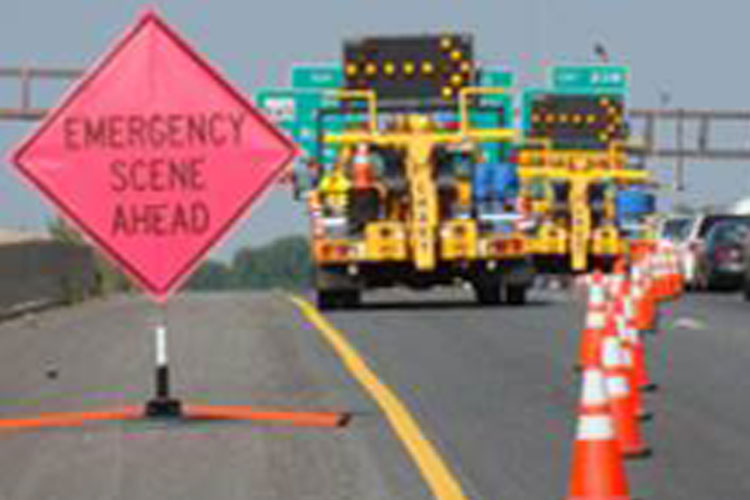
Create a regional framework for expanding transit across Our Region
A regional framework for expanding transit would provide a blueprint for necessary programs, projects and initiatives to expand and coordinate public transportation throughout the 13-county region.
It would serve to enhance the role of public transit as an economic engine for workers and businesses and seek to improve efficiencies between existing public transportation systems.
More information about this strategy is available in the Strategy Playbook.
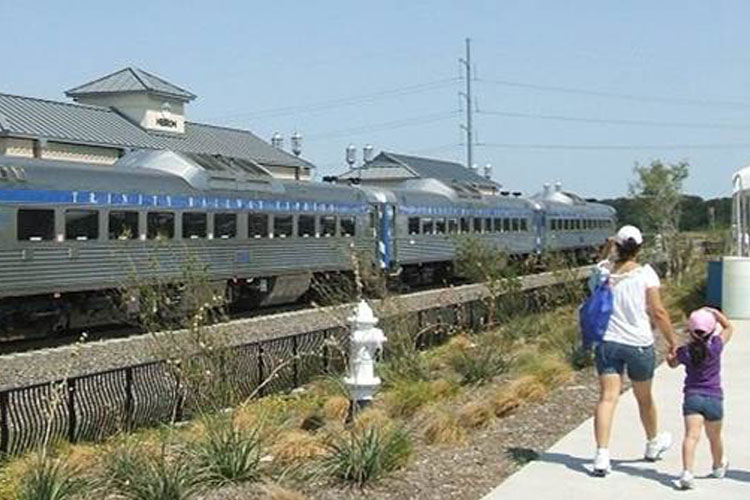
Develop and implement policies to improve transit, pedestrian, and bicycle access between and within activity centers, connecting residents to job centers
Major employment and population centers are scattered throughout Our Region. Travel between these activity centers can be difficult, especially without a car. Providing alternative means of transportation within and between activity centers will help reduce congestion on Our Region's roadways, improving quality of life and creating more travel options for residents.
Communities can implement policies that will help make activity centers suitable for transit, walking, and biking. Careful planning can lead to the inclusion of measures supportive of alternative modes of transportation, eliminating the need for costly retrofits.
More information about this strategy is available in the Strategy Playbook.
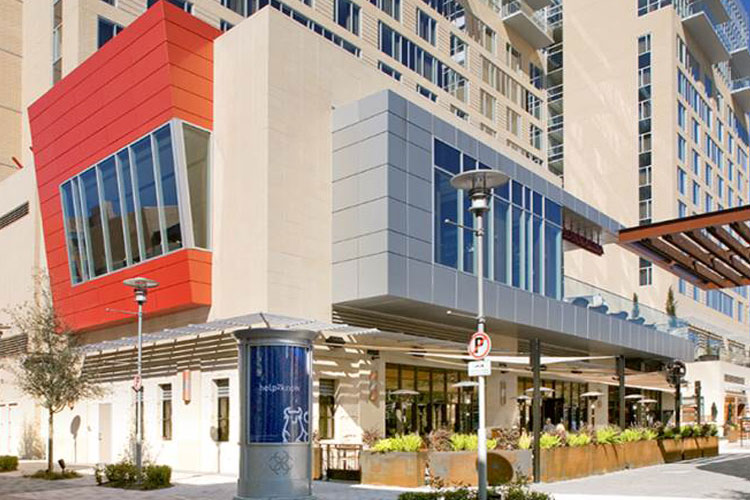
Provide counties with tools to better coordinate land use and transportation planning in unincorporated areas
Transportation and land use are interdependent; the coordination of planning activities can reduce transportation spending and lead to a greater number of transportation options for communities.
Currently counties in Texas are very limited in how they are able to plan and manage growth within their unincorporated areas. State legislation allowing counties to utilize a greater variety of land use and transportation planning tools could enhance the health and safety for county residents living in unincorporated areas.
More information about this strategy is available in the Strategy Playbook.
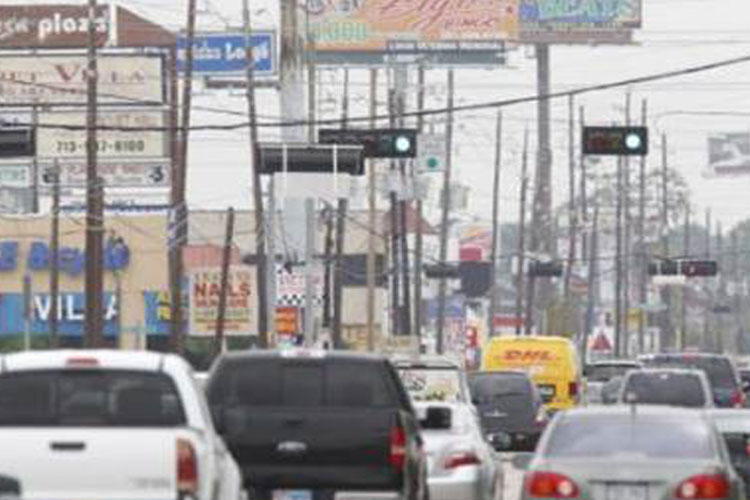
Include economic, safety, quality of life, and environmental costs and benefits of transportation projects in funding prioritizations
Transportation planning in Our Region has historically emphasized improving congestion and air quality when calculating the costs and benefits of projects. While it is important that goods and people can move freely around Our Region, other considerations must be weighed in prioritizations to ensure a balanced transportation system.
Possible prioritization measures could include safety, economic development, and quality of life considerations such as community identity, social equity, and public health.
More information about this strategy is available in the Strategy Playbook.
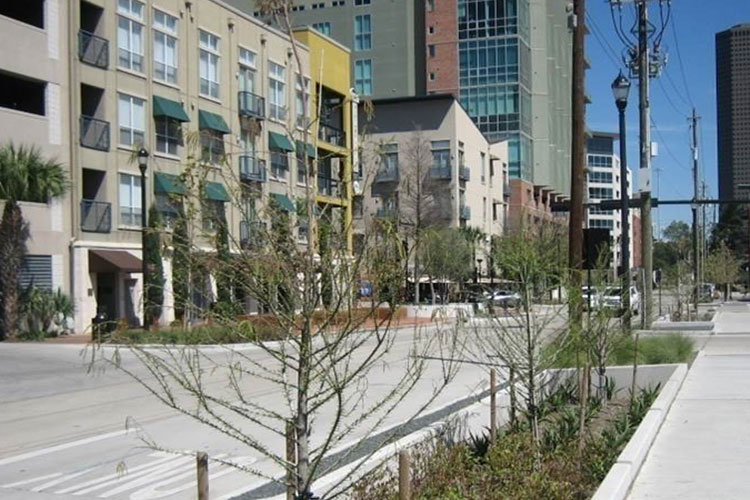
Increasing Our Resiliency to Natural and Manmade Disasters
To be a great region in 2040, we should increase our resiliency to disaster and a changing environment.
Our Region is vulnerable to hurricanes, flooding, drought, erosion, subsidence, and wildfires. We have bounced back from such disasters in the past, but know that the threat remains constant. Reducing our vulnerability, where possible, to these events and speeding the rate of recovery will improve our safety and quality of life, as well as our ability to attract new residents and businesses. Structural solutions, like dikes, flood gates, and drainage improvements, will be needed to protect key assets, but their cost means this approach must be carefully targeted. Using the natural landscape to store floodwaters and storm surge and being wiser about how and where we build to reduce our vulnerability are approaches that can be applied more broadly.
For more information about Economic Development, download Our Great Region 2040 or the Strategy Playbook for a complete list of strategies.
Learn more about the Priority Strategies using the tabs below.
Create education programs on wildfire, flooding, drought, and other risks
Our Region is vulnerable to hurricanes, flooding, drought, and wildfires, but many people are unaware of the risks these disasters present.
To limit property damage and protect citizens, Our Region can create public education programs that provide residents and businesses with information on how they can reduce their vulnerability to natural disasters. These programs can be tailored to appeal to different audiences, ensuring that potentially life-saving information is relayed to Our Region's diverse citizenry.
More information about this strategy is available in the Strategy Playbook.
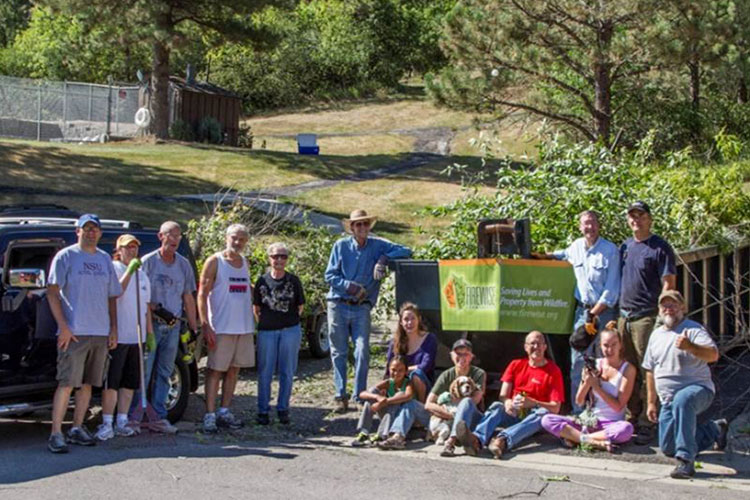
Develop an integrated regional storm defense system, which includes both structural and non-structural elements
Due to its location along the Gulf of Mexico, Our Region is vulnerable to hurricanes and tropical storms. Storm surges from previous events have caused significant damage, and future storms have the potential to be just as destructive. An integrated regional storm defense system, which includes both structural and non-structural elements, could help protect homes, businesses, industries, and critical infrastructure from inundation, reducing the risk of property damage and loss of life.
Structural elements, including dikes, flood gates, levees, building adaptations, and other physical improvements, could help protect key assets, but their high cost means that this approach must be carefully targeted. Non-structural elements are policies and actions that reduce risk, such as protecting coastal wetlands, limiting development in flood-prone areas, and educating the public about flood risk. An integrated approach can reduce potential losses in a cost-effective way, protecting both existing communities and fragile ecosystems
More information about this strategy is available in the Strategy Playbook.

Enhance coordination of evacuation planning and preparation efforts, particularly to address the needs of vulnerable populations
Previous regional hurricane evacuations brought into focus the difficulties faced in efficiently moving large portions of the region's population out of harm's way. Much work has been done to improve the region's capacity for mass evacuations since Hurricane Rita in 2005, but ongoing coordination is needed to ensure emergency preparedness.
Planning efforts are especially needed to address the needs of vulnerable populations: the disabled, elderly, infirm, or indigent. Partnerships among a range of organizations strengthen the region's ability to cope with natural disasters.
More information about this strategy is available in the Strategy Playbook.

Develop a rapid recovery plan to help people and businesses return as quickly as possible
Flooding, hurricanes, wildfires, and other natural events can cause catastrophic damage, destroying homes, businesses, and critical infrastructure. Widespread destruction can lead to an overwhelming sense of loss, causing many residents and businesses to relocate to other areas. High rates of outmigration make recovery difficult, threatening the long-term economic vitality of affected communities.
A rapid housing and business recovery plan establishes policies and procedures aimed at facilitating the reconstruction of buildings and infrastructure as soon after a disaster as possible, allowing displaced residents and businesses to quickly return to their communities.
More information about this strategy is available in the Strategy Playbook.
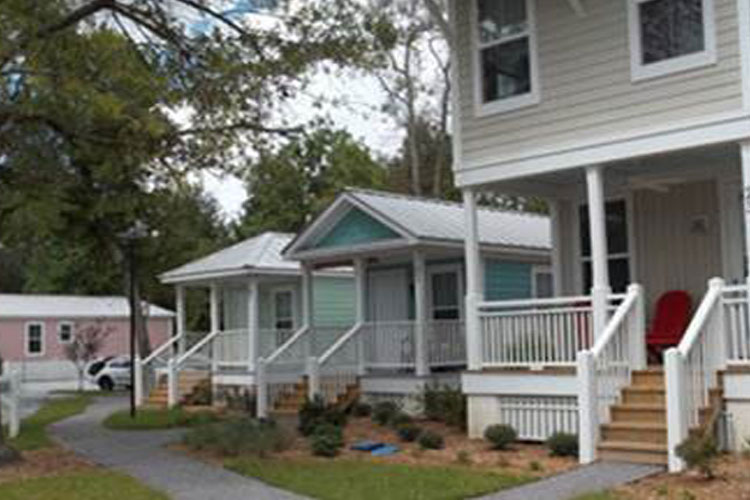
Improve regional air quality and reduce regional greenhouse gas emissions by offering alternative modes of transportation, improving energy efficiency, and effectively managing resources
Emissions from vehicles, industries and power plants (nitrogen oxide and volatile organic compounds), in the presence of heat and sunlight, create ground-level ozone through a chemical reaction. Increased temperatures resulting from potential climate change could lead to a greater number of days in which ozone levels exceed air quality standards, exacerbating Our Region's existing ozone difficulties. R
Reducing emissions will improve air quality, decreasing the amount of ozone-causing gases in the air. A variety of tools can be used to reduce emissions on both a local and regional level.
More information about this strategy is available in the Strategy Playbook.
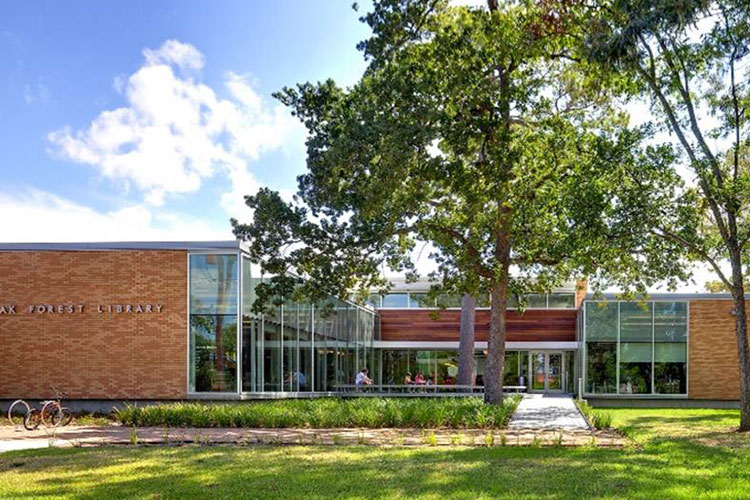
Support innovative adaptation strategies that help communities prepare for potential environmental changes, such as severe weather events and sea level rise
Potential environmental changes may result in higher temperatures, rising sea levels, and increased intensity and frequency of extreme weather events (drought, tropical storms, etc, impacting local ecosystems, economies, and infrastructure. Communities can use innovative adaptation strategies to minimize economic disruptions, property damage, and loss of life, should these predictions become reality.
Adaptation strategies can address a variety of issues, including water conservation, flood risk reduction, and alternative energy production. Implementation of these strategies will not only allow Our Region to quickly recover from disaster, but improve overall quality of life.
More information about this strategy is available in the Strategy Playbook.
